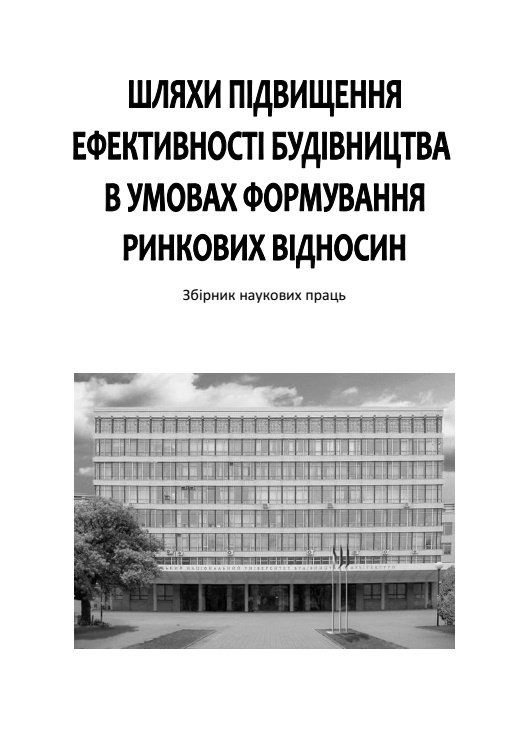Organizational and production components at the stage of engineering preparation of an investment and construction project, their role in managing the cycle of construction production
DOI:
https://doi.org/10.32347/2707-501x.2019.39.18-23Keywords:
construction, development, investment, residential real estate, construction production, organizational structure, management structure, functions and goalsAbstract
One of the forms of organizational design is the system of construction production in the context of investment and construction real estate projects. The distribution of the construction industry into an organizational and production structure makes it possible to determine the main goals and functions of the participants in the construction process using the model example.
Investment and construction real estate projects are directly related to the technological process of construction production. Efficiency and rhythm of construction projects is achieved through a timely and coordinated approach of setting tasks and making fundamental decisions at each organizational and managerial level, first of all this is reflected at the stage of engineering preparation of a construction project.
The optimal definition of priorities at the stage of engineering preparation of the construction site, the minimum use of resources and the opening of work for the next stages of construction production ensures the production process with the principles of proportionality, directness and continuity - for more efficient production management, organizing the interaction of participants in construction and investment projects and future development of housing construction in Ukraine. It is proposed to scientifically investigate and put into practice the system model of interaction between organizational components and production environmental factors for the effectiveness of the entire system and its individual elements.
References
Мазур И.И. Девелопмент недвижимости: справочник профессионала: уч.пособ. / И.И. Мазур, В.Д. Шапиро и др. – М.: Омега-Л, 2009. – 1035 с.
О.М. Лівінський, О.І. Курок, І.Н. Дудар, Г.М. Тонкачеєв, М.І. Бондаренко, О.Г. Хоменко, В.І. Савенко, Т.Г. Ровенчак, Т.Е. Потапова, С.П. Шарапа Організація, планування та управління в будівництві. Підручник. – К.: (УАН), «МП ЛЕСЯ», 2016. – 566 с.
Ушацький С.А. Організація будівництва/ С.А. Ушацький, Ю.П. Шейко, Г.М. Тригер та ін.; За редакцією С.А. Ушацького. Підручник. – К.: Кондор, 2007. – 521 с.
Петрович Й.М. Управління діяльністю організаційно-виробничих систем: навч. посіб. / Й. М. Петрович. - К. : Знання, 2013. - 510 с.
Гриньова В.М., Салун М.М. Організація виробництва: Підручник. – К.: Знання, 2009. – 582 с.
Чайка Г.Л., Чайка О.Г. Ефективність в управлінні: навч.посіб./ Г.Л. Чайка, О.Г. Чайка. – К: Знання, 2018.-334 с.
Downloads
How to Cite
Issue
Section
License

This work is licensed under a Creative Commons Attribution 4.0 International License.
Authors who publish with this journal agree to the following terms:
- Authors retain copyright and grant the journal right of first publication with the work simultaneously licensed under a Creative Commons Attribution License that allows others to share the work with an acknowledgement of the work's authorship and initial publication in this journal.
- Authors are able to enter into separate, additional contractual arrangements for the non-exclusive distribution of the journal's published version of the work (e.g., post it to an institutional repository or publish it in a book), with an acknowledgement of its initial publication in this journal.
- Authors are permitted and encouraged to post their work online (e.g., in institutional repositories or on their website) prior to and during the submission process, as it can lead to productive exchanges, as well as earlier and greater citation of published work (See The Effect of Open Access).

